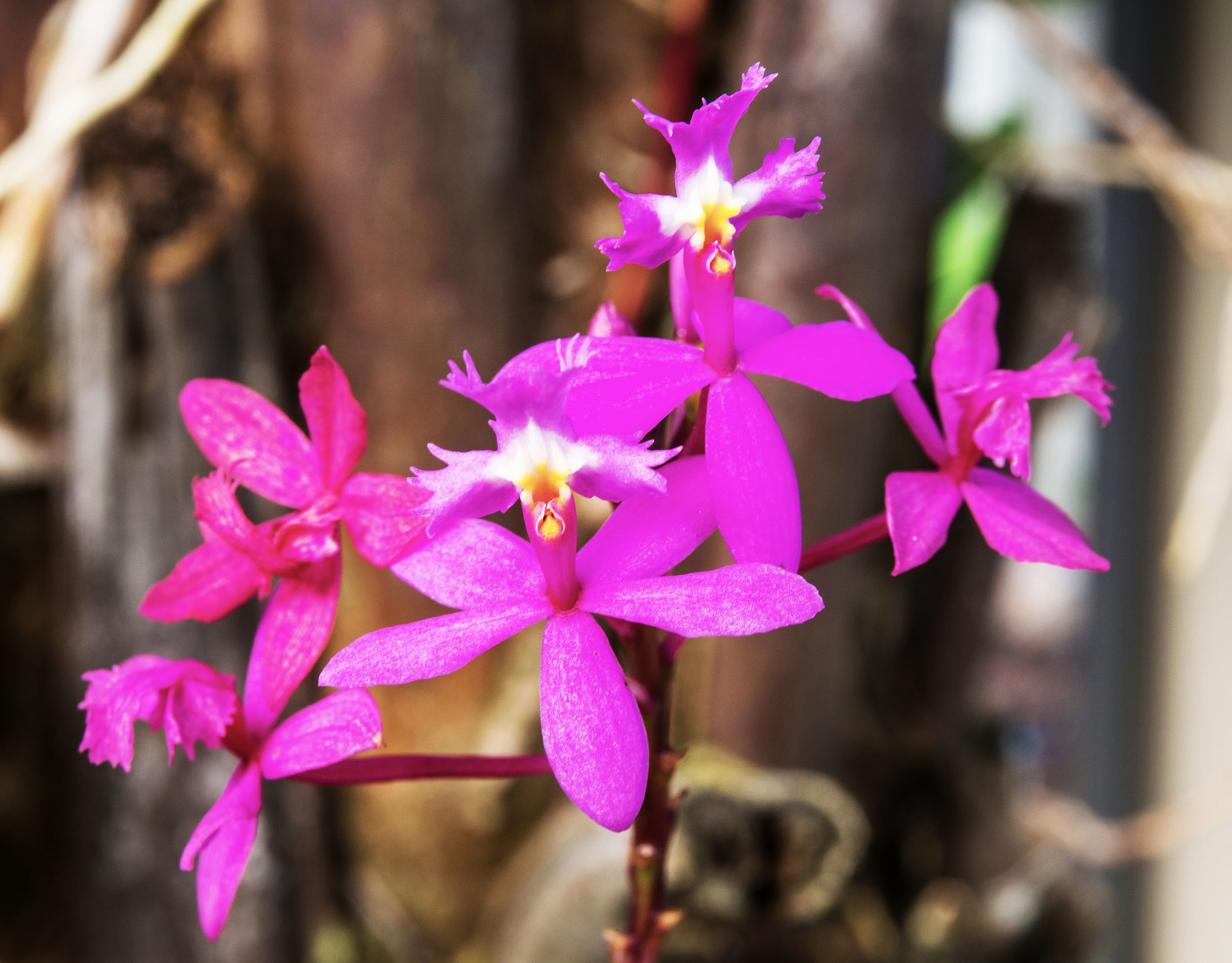Orchidaceae — Earth’s Most Beautiful Orchids

Epidendrum ibaguense -- crucifix orchid
Epidendrum ibaguense — crucifix orchid
Epidendrum ibaguense, also known as the crucifix orchid, is a species of epiphytic orchid of the genus Epidendrum which occurs in Trinidad, French Guyana, Venezuela, Colombia and Northern Brazil.
Like the other members of Epidendrum E. ibaguense exhibits a pseudo-monopodial growth habit: it produces a vertical stem covered with the sheathing bases of distichous leaves and without the swelling typical of the pseudobulbs found in many sympodial orchids.
However, Epidendrum ibaguense is actually sympodial: the peduncle of the inflorescence, tightly covered for most of its length by thin, overlapping sheaths, is terminal, not lateral.
A new growth is then produced from near the base of the old one, although E. ibaguense will frequently produce a keiki from an old inflorescence.
Epidendrum ibaguense flowers are borne on a congested, successively flowering raceme at the end of a long peduncle, and have a trilobate lip that is adnate to the column to the very apex. The three lobes of the E. ibaguense lip are deeply fringed or lacerate.
Like E. radicans, the flowers of Epidendrum ibaguense are resupinate. E. ibaguense differs from E. radicans by producing most of its roots from near the bottom of the stem, and producing stems that “really stand up.”
Different individuals of E. ibaguense can produce flowers that are lavender, red, orange, or yellow.
The Orchidaceae are a diverse and widespread family of flowering plants, with blooms that are often colourful and fragrant, commonly known as the orchid family.
Along with the Asteraceae, they are one of the two largest families of flowering plants. The Orchidaceae have about 28,000 currently accepted species, distributed in about 763 genera.
The determination of which family is larger is still under debate, because verified data on the members of such enormous families are continually in flux. Regardless, the number of orchid species is nearly equal to the number of bony fishes, more than twice the number of bird species, and about four times the number of mammal species.
The family encompasses about 6–11% of all seed plants.
The largest genera are Bulbophyllum (2,000 species), Epidendrum (1,500 species), Dendrobium (1,400 species) and Pleurothallis (1,000 species). It also includes Vanilla (the genus of the vanilla plant), the type genus Orchis, and many commonly cultivated plants such as Phalaenopsis and Cattleya.
Moreover, since the introduction of tropical species into cultivation in the 19th century, horticulturists have produced more than 100,000 hybrids and cultivars.











